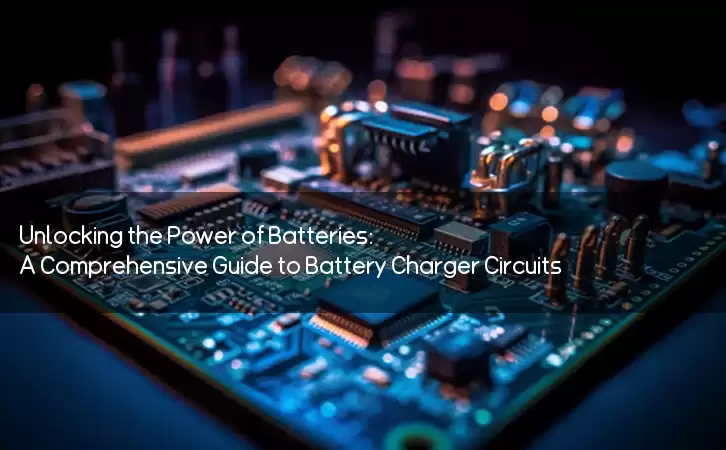Information Center
Unlocking the Power of Batteries: A Comprehensive Guide to Battery Charger Circuits
Published:2023-07-10 20:34:07 Author:Green WCND Views:32Battery Charger Circuit: An Introduction

The battery charger circuit is an electronic piece of equipment that helps in charging various types of batteries like lead-acid batteries, NiCad or NiMH batteries, Lithium-ion batteries, etc. The primary objective of a battery charger circuit is to facilitate the transfer of electrical energy from the charger to the battery, which in turn stores it as chemical energy. A battery charger circuit usually has a range of functionalities, like constant voltage charging, fast charging, trickle charging, etc.

Components of a Battery Charger Circuit:

The basic components of a battery charger circuit include a transformer, rectifier, regulator, and filter capacitors. The transformer is responsible for transforming the AC voltage from the mains supply to the required voltage level. The rectifier converts the AC voltage into DC voltage, which is further filtered through the filter capacitors. The regulator ensures that the output voltage remains constant and within the specified limits.
Types of Battery Charger Circuit:
There are mainly three types of battery charger circuits:
1. Constant Voltage Charger: It maintains a constant voltage level across the battery’s terminals during the charging process. This type of charger is useful for lead-acid batteries and is mostly used for trickle charging or maintaining battery state during storage.
2. Constant Current Charger: It maintains a constant current flow during the charging process. This type of charger is useful in fast charging and is suitable for Lithium-ion batteries.
3. Automatic Charger: It adjusts the charging voltage and current according to the battery’s state, making it a versatile battery charger. It is useful for charging various types of batteries like lead-acid, NiCd, NiMH, and Lithium-ion batteries.
Working of a Battery Charger Circuit:
The working of a battery charger circuit starts when the charger is switched on and the battery is connected to its terminals. The transformer steps down the AC voltage from the mains supply to the required voltage, which is then rectified by the rectifier. The resulting DC voltage is filtered through the filter capacitors and fed into the regulator. The regulator ensures that the output voltage remains constant and within the specified limits, and the current flows into the battery.
The charging process follows different stages like bulk charging, absorption charging, and trickle charging. The battery charger circuit automatically adjusts the charging voltage and current according to the battery’s state and terminates the charging cycle when the battery is fully charged.
Advantages of Using a Battery Charger Circuit:
1. It protects the battery from overcharging, which can cause damage to the battery and reduce its lifespan.
2. It ensures a consistent and efficient charging process, resulting in longer battery life.
3. It is easy to use and can charge various types of batteries.
Conclusion:
The battery charger circuit is an essential electronic device that facilitates the charging of various types of batteries. It is a useful tool for maintaining battery life and ensuring their optimal performance. The different types of battery charger circuits cater to different requirements, and their functionalities make them suitable for specific battery types. Using a battery charger circuit can not only help in extending the battery life but can also be an integral part of energy-efficient practices.
IntroductionGolf carts serve as vital transportation tools on golf courses, and their performance and reliability are crucial for enhancing player experience an···
The battery pack is the heart of a golf cart, silently powering every acceleration and climb on the green. However, battery degradation often goes unnoticed, mu···
The battery pack is the heart of a golf cart’s power system, yet maintaining it has long been a challenge for technicians. Traditional troubleshooting methods—···
For golf course managers, ensuring smooth and efficient operations is crucial for providing a memorable experience for golfers and maintaining the reputation of···





